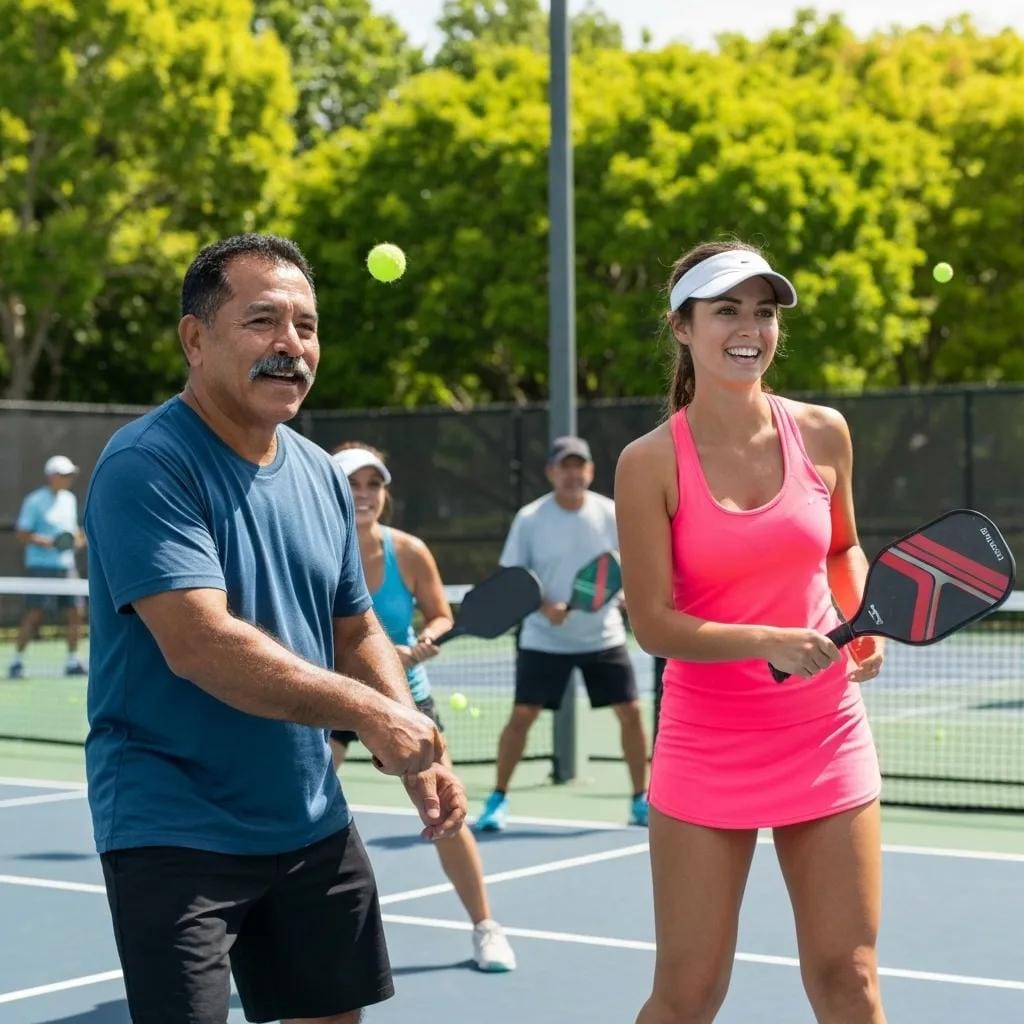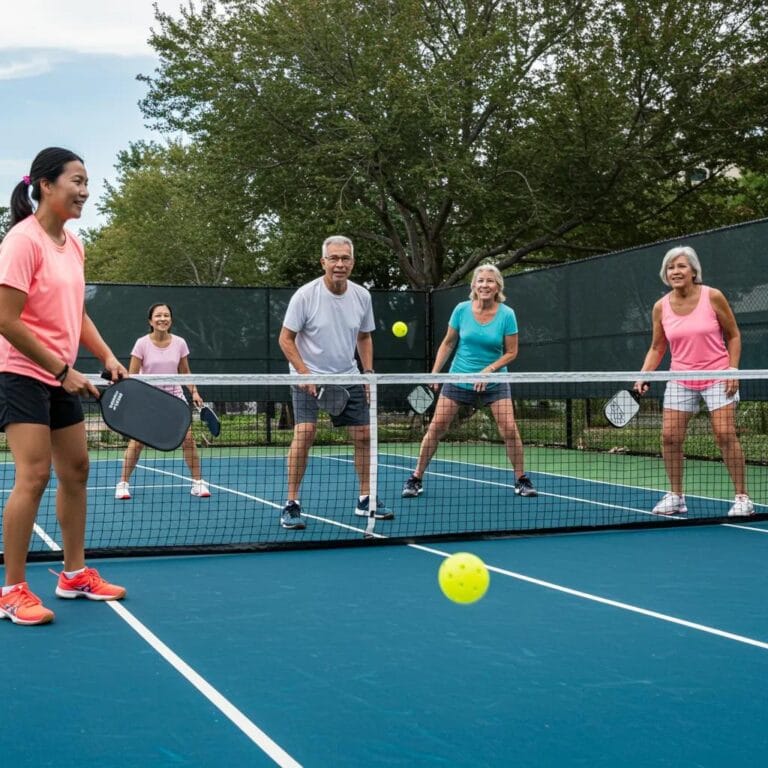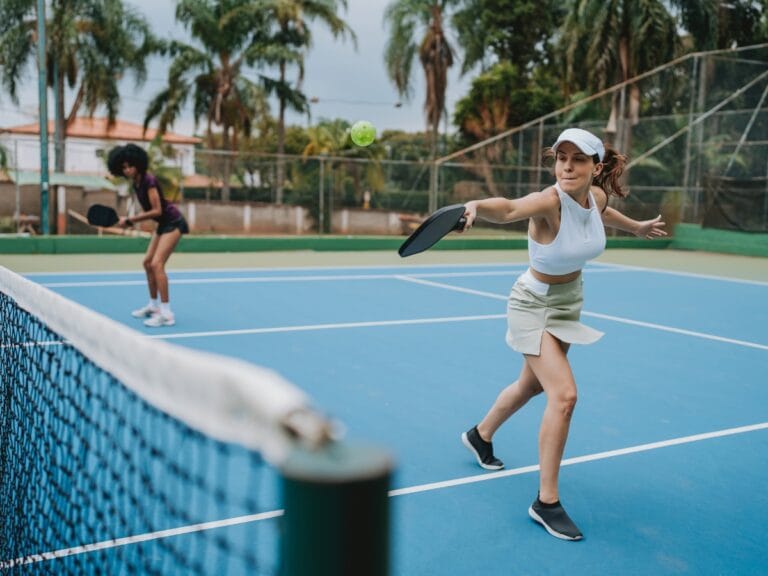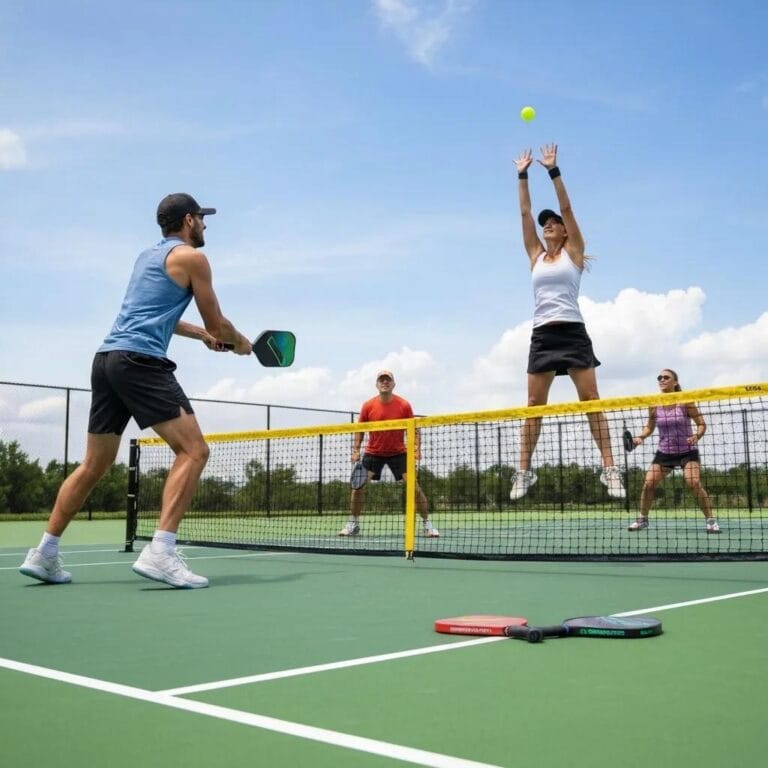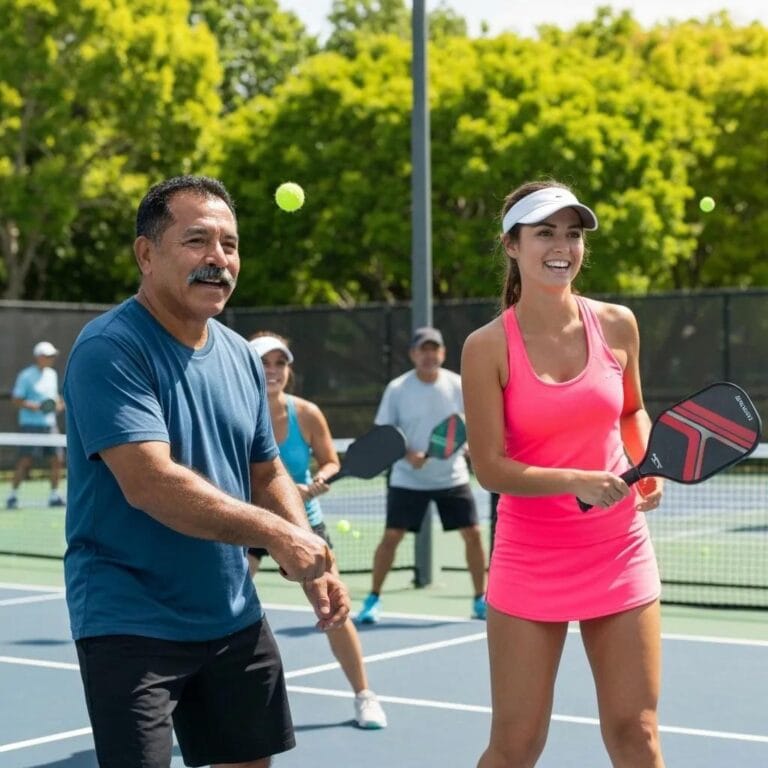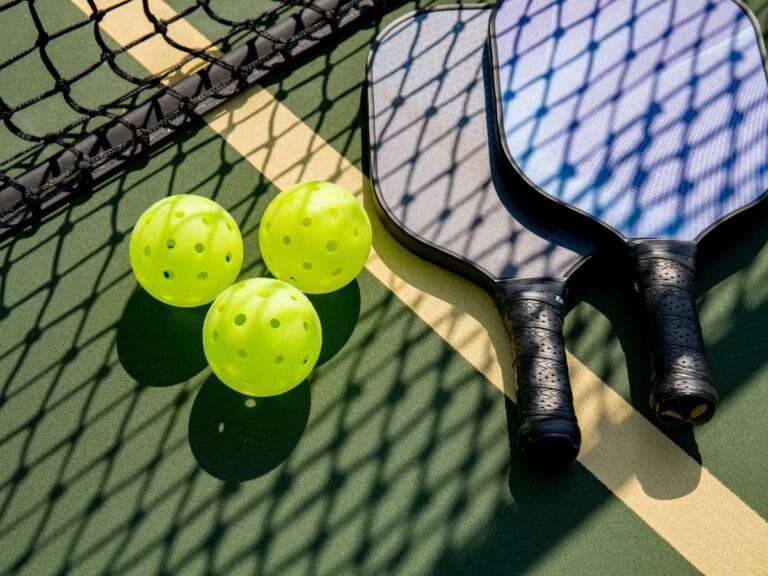Why is pickleball so popular? This rapidly growing sport has swept across community centers, parks, and gyms nationwide, captivating players of all ages and athletic backgrounds. Its surge in popularity isn’t accidental—pickleball combines accessible rules, minimal equipment needs, and social engagement in a way few other activities can match. With a smaller court size and slower-paced ball, it’s easier to learn than tennis yet still offers competitive excitement and a real workout. In this article, we explore the key factors behind the pickleball phenomenon, from its inclusive nature and low barrier to entry to its strong sense of community, explaining why so many people are picking up a paddle and joining the fun.
Why Is Pickleball So Popular? The Fastest-Growing Sport Explained
What Makes Pickleball So Easy to Learn and Accessible for Everyone?
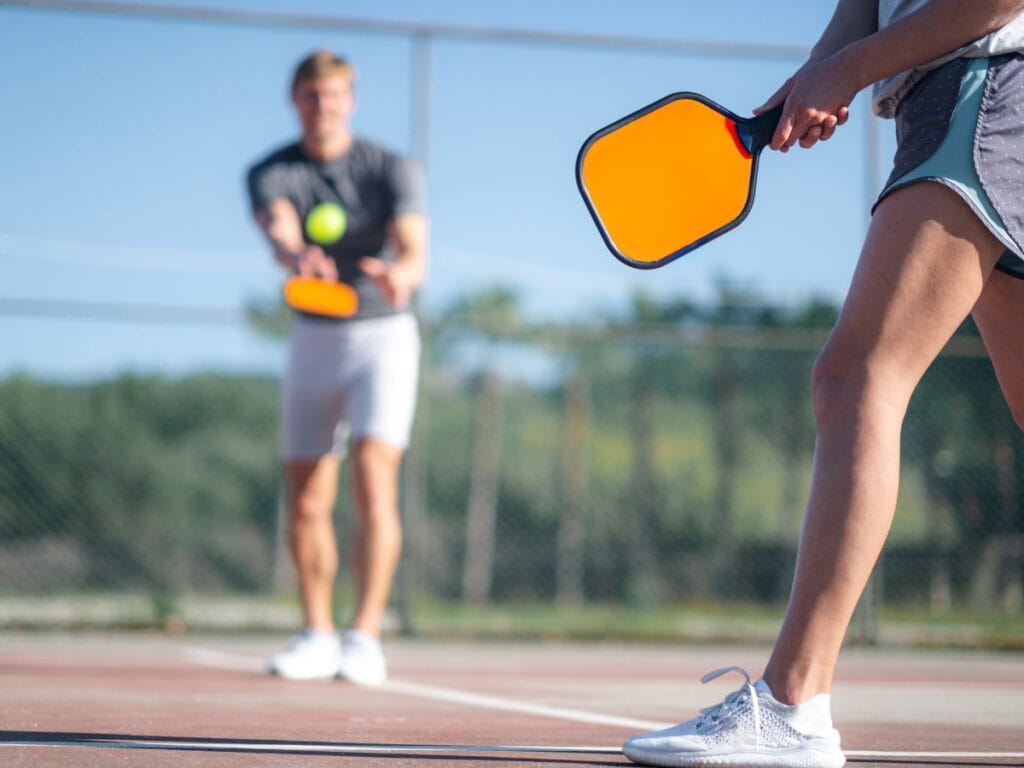
Pickleball blends familiar pieces of tennis, badminton, and table tennis into a simple game that rewards control over power. The rules are straightforward and the court is small, so newcomers can rally within minutes. An underhand serve, a light paddle, and a perforated plastic ball slow the pace enough for players to focus on timing and placement. Because the learning curve is gentle, people try a few points, feel early success, and want to keep playing.
Simple Rules That Welcome New Players
The court measures 20×44 feet, which means less running and quicker points. Serves are underhand and must land cross-court, a motion most people can repeat without much coaching. After the serve there is a brief two-bounce sequence, then players can volley, dink, or drive depending on position. The non-volley zone near the net, often called the kitchen, encourages softer exchanges and longer rallies. Beginners pick up the core ideas in a single session because the game rewards consistency and touch rather than sheer strength.
Suitable For All Ages And Fitness Levels
Pickleball scales to the player. Kids build hand-eye coordination with short paddles and a light ball. Adults who want a workout can play faster points and cover more of the court. Older players often set up closer to the kitchen, where they can control pace with placement and doesn’t rely on long sprints. Matches can be casual or competitive, and doubles reduces the movement required for each person. There are also modified formats, including seated play and gentler house rules, that keep the game inclusive for people returning from injury or managing limited mobility.
Gear And Court Features That Speed Learning
Entry-level paddles with a textured grip help beginners feel the ball on contact and guide it toward the target. The polymer wiffle ball produces a predictable, moderate bounce, which makes timing easier and extends rallies. Many indoor courts use cushioned surfaces that reduce joint stress during stops and pivots. Clear boundary lines and contrasting kitchen markings help new players see where to stand and which shots are allowed. With the right setup, newcomers get immediate feedback, make quick adjustments, and gain confidence in basic strokes like the serve, volley, and soft dink.
How Community And Format Keep People Playing
Games are short, so players rotate in and out with little waiting. Open play sessions mix skill levels and make it simple to find partners. Because the rules emphasize control, experienced players can rally with beginners without lopsided points. The sport is social by design. Between games, it is easy to swap tips, plan a rematch, or invite someone new to join your foursome. That steady blend of quick games and friendly culture turns first-timers into regulars.
The Bottom Line: Why Is Pickleball So Popular
It is approachable, low cost to start, and truly social. The rules are easy, the court is compact, and the equipment rewards feel over force. Players of different ages and abilities can share the same court and have a good match. Those ingredients add up to a sport people can learn quickly, play often, and enjoy together year round.
How Does Pickleball Foster Strong Social Connections and Community?
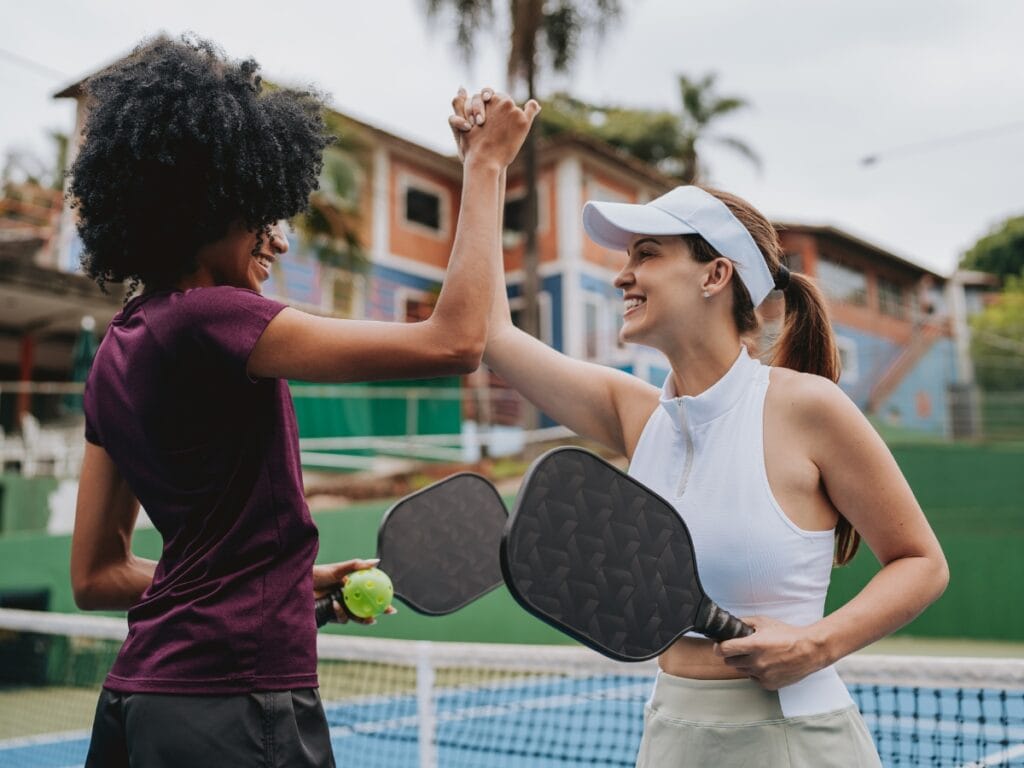
Ask any regular player why is pickleball so popular and you will hear the same theme: it is social by design. The small court and doubles format put people close enough to talk, laugh, and trade tips between points. Games are short, so players rotate partners often and meet new people without the awkwardness that can come with other sports. The result is a steady mix of familiar faces and first timers that makes it easy to belong.
Why Pickleball Is A Social Sport
Doubles play invites constant communication. Partners call shots, discuss where to stand, and celebrate clean rallies together. Because the pace favors control over brute force, players with different skill levels can share a court and still have a good match. That balance keeps frustration low and conversation high. When points end, people reset quickly, chat for a moment, and get right back to it. Those small interactions add up to real friendships.
How Rotations And Format Build Community
Open play is common at parks and indoor courts. Players place paddles on a rack, step into the next available game, and swap partners every few rounds. No one has to arrive with a full team or book long blocks of time. You can play for 30 minutes or make a morning of it. Rotations also help newcomers find guidance. A more experienced player might offer one quick pointer about footwork or the soft shot near the net, then invite a rematch. With that structure in place, people return because they feel welcome and included.
Events And Clubs That Strengthen Connection
Local clubs and community centers in Atlanta and other cities run weekly socials, round robins, and lighthearted theme nights that pair games with simple food or music. Seasonal leagues group players by skill so matches stay competitive without getting tense. Family clinics give parents and kids a shared activity that does not require specialized gear or long travel. Charity tournaments bring neighborhoods together around a cause while keeping the entry cost reasonable. Each format does the same job in a different way: it gives people regular times and places to show up, play, and talk.
How Pickleball Supports Mental Health
Regular play checks several boxes that support well-being. It offers social contact, moderate cardiovascular activity, and clear, attainable goals. That mix tends to lift mood and reduce stress. Strategy plays a role too. Players read angles, choose between a soft dink or a drive, and adjust to opponents on the fly. The mental focus required for a close game leaves little room for rumination, which is one reason many people leave the court in a better headspace than when they arrived. For those who prefer a gentler session, doubles and the compact court make it easy to manage effort while still getting the benefits of movement and connection.
Putting It All Together
Pickleball grew fast because it lowers the barriers that keep people from playing sports. The rules are simple, equipment is easy to handle, and games move quickly. Most of all, the format creates constant, low-pressure interaction. You show up, play a few short games, meet a few new people, and look forward to coming back. That is the everyday answer to why is pickleball so popular: it makes community the default.
What Are the Health and Wellness Benefits of Playing Pickleball?
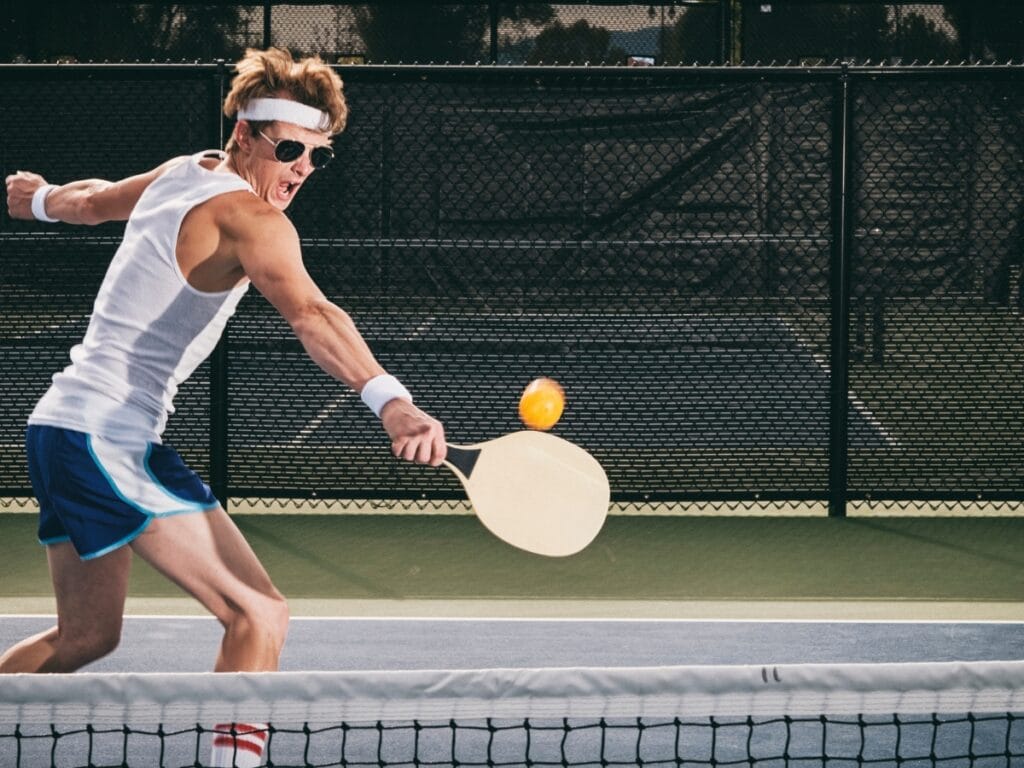
Ask regulars why is pickleball so popular and you will hear a simple answer: it delivers real fitness with less wear and tear, plus a social boost that keeps people coming back. The game blends steady cardio, quick footwork, and hand-eye coordination in short bursts, so most players can get a full-body workout in a single session without feeling beat up the next day. Because the rules are simple and the court is compact, beginners find early success and build confidence fast.
Cardiovascular Fitness And Physical Health
Rallies keep most players in a moderate heart-rate zone, often around 60 to 80 percent of maximum, which supports aerobic health without long, punishing efforts. The stop-start rhythm trains recovery, while lateral shuffles, split steps, and quick direction changes improve balance and agility. Reaching for volleys and dinks challenges core stability and shoulder strength in a controlled way. Over time, regular play can support weight management and help reduce common risk factors tied to heart disease. For people who find running or high-impact classes hard on the joints, pickleball offers a practical path to consistent cardio.
Mental Health And Stress Relief
Every point asks you to read angles, pick a target, and anticipate the next shot. That focus quiets mental noise and replaces it with clear, immediate goals. Small wins arrive often, whether it is placing a serve on the line or dropping a soft shot into the kitchen, and those quick successes build momentum. The sport’s social nature matters just as much. Partners talk through simple tactics, trade encouragement, and celebrate good points. That steady, positive interaction can lift mood and ease day-to-day stress, turning court time into a reliable reset.
Low-Impact Exercise For Older Adults
Pickleball rewards placement and timing more than raw power, which helps protect joints. The non-volley zone near the net encourages softer exchanges and limits repeated overhead swings. Doubles play reduces the area each person must cover, and many indoor courts use cushioned surfaces that soften pivots and stops. Players can scale effort to how they feel on a given day, which makes it easier to stay active through minor aches or after time off. The result is regular movement that supports mobility, balance, and social connection without excessive strain.
Skill Development And Safer Habits
Progress comes quickly when players keep strokes compact and footwork simple. A brief warmup with short volleys and side steps prepares ankles, calves, and shoulders. Bending the knees on low balls, using small adjustment steps, and avoiding wild reaches all reduce the risk of strains while raising your level. As skills grow, adding serves with shape, consistent third-shot drops, and targeted returns builds coordination and reaction time without raising impact. Clear court markings and predictable ball flight give immediate feedback, which speeds learning for all ages.
Pickleball earns its popularity by combining fitness, fun, and community in a format that welcomes almost everyone. It offers meaningful cardio, coordination, and strength work in sessions that fit a lunch break or a weekend morning. The game scales to your pace, rewards smart play over brute force, and makes it easy to meet people. That mix explains why is pickleball so popular and why so many players stick with it for the long term.
Why Is Pickleball Growing So Rapidly? Key Statistics and Trends Behind Its Popularity
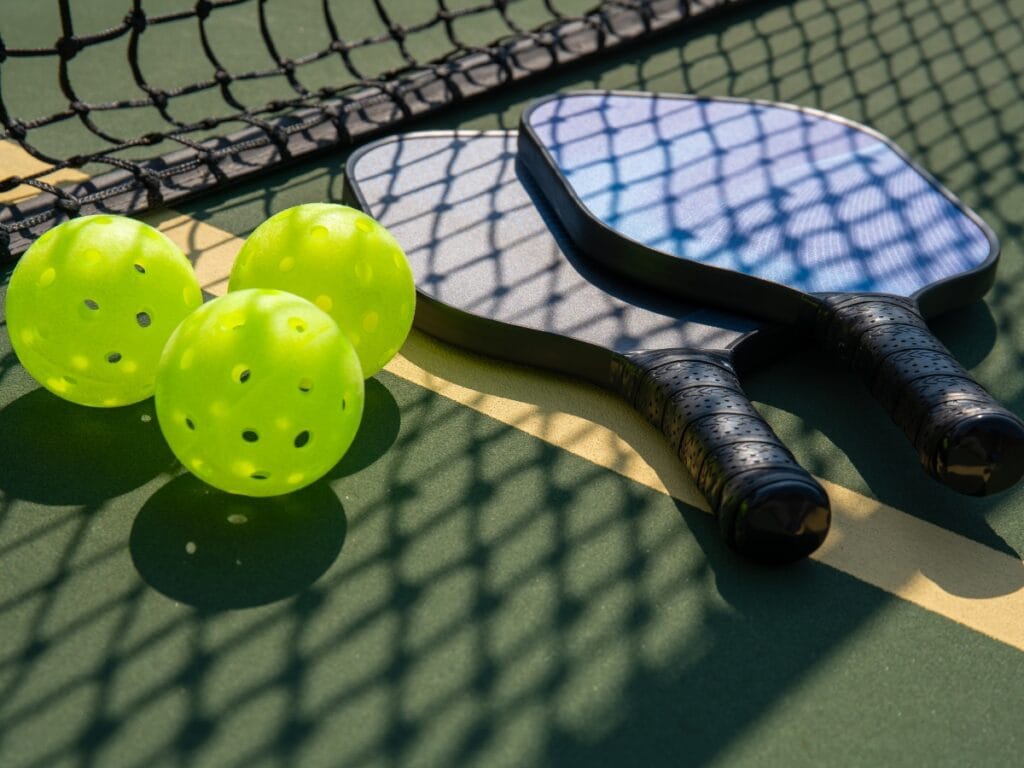
When you regular players why is pickleball so popular, you’ll find that the answers line up with the data. The sport is easy to learn, social by design, and available in more places every month. Those drivers show up in the numbers. Over the past three years, participation in the United States has climbed about 311%, turning a niche game into an everyday option at parks, schools, and private venues. The result is a steady stream of new players who pick up a paddle, find quick success, and return with friends.
Participation Rates And Demographic Shifts
In 2024, an estimated 19.8 million Americans played pickleball, a 45.8% jump from the prior year. Young adults now lead the way, with the largest share of players in the 25 to 34 range. Youth participation is rising as schools and community programs add courts and basic instruction, bringing more than 1 million kids into the game last season. At the same time, seniors continue to play at high rates because the compact court and underhand serve make it easier to stay active without heavy impact. This mix matters. When a sport works for kids, working adults, and older players, it earns more court time across a full week and builds a broader community.
Courts And Facilities In Atlanta And Beyond
Access fuels growth. Court installations nationwide increased by more than 50% in 2024, and the South Atlantic region has been a major contributor. The Atlanta area shows how fast the landscape can change. Public parks have taped or lined existing tennis courts to accommodate pickleball, while new indoor and outdoor builds add dedicated lines, proper kitchen zones, and lighting that supports evening play. Across the country there are now more than 70,600 courts at roughly 16,200 locations, which makes it easier to find open play, lessons, or leagues close to home. Indoor venues also help players keep a routine through hot summers and rainy seasons, turning a weekend hobby into a year-round habit.
What The Next Few Years Could Look Like
Analysts expect annual growth in the 20 to 30 percent range over the next five years. Corporate wellness programs are introducing employees to the sport through on-site leagues and stipend-supported memberships. School districts are adding units in physical education, which gives kids a low-cost entry point that does not require specialized gear. Senior living communities are building courts as part of their amenities, making it simple to form house leagues and regular social play. On the equipment side, manufacturers are refining lighter paddles and tuning ball designs to improve durability and flight in different conditions. Each of these changes lowers a small barrier and keeps the adoption curve moving.
How Does Pickleball Appeal to Families and Multi-Generational Players?

If you ask a crowd why is pickleball so popular, families often mention the same things. The rules are simple, the court is small, and doubles play keeps the pace manageable. Kids, parents, and grandparents can share the same court without anyone feeling left out. Because the game rewards placement and teamwork more than raw power, a grandparent can win points with a smart soft shot while a teenager covers a little extra ground. Short games and frequent rotations also help schedules line up, so a family can play together after dinner or on a weekend morning without committing an entire day.
Programs And Activities That Build Family Bonding
Community centers, parks, and clubs across Atlanta run programs that make it easy for families to learn and play together. Parent-child clinics focus on basic footwork, serving, and soft shots near the net, then end with a few friendly games so everyone leaves with a success. Family hours set aside courts for mixed ages and skill levels, which avoids the mismatch that can happen in open play. Themed evenings, such as costume rallies or glow nights, add a playful twist that keeps younger players engaged. Some leagues even track family standings and celebrate teams that span two or three generations. The common thread in all of these formats is structure that encourages cooperation and gives everyone a clear role on the court.
How Kids And Adults Benefit Differently
Children build coordination and confidence quickly because the paddle and plastic ball are easy to control. The game teaches turn taking, patience, and sportsmanship in a setting that feels like play rather than a lesson. Adults get a different set of gains. Pickleball delivers moderate cardio without long runs, and the stop-start rhythm fits better into busy days than a full workout at the gym. The mental side also matters. Choosing targets, reading angles, and deciding between a soft shot or a drive keeps the brain engaged. Many adults find that an hour of focused play leaves them clearer and more relaxed than when they arrived.
Why It Is Fun And Inclusive For All Generations
Pickleball does not require a specialized background or expensive gear. A basic paddle and a few balls are enough to start. The non-volley zone near the net encourages softer exchanges, which reduces big swings and makes rallies feel safe and fair. Because doubles spreads the work, players can adjust their effort to their comfort level and still contribute. Coaches and experienced players often share quick pointers between points, which helps new players improve without a formal lesson. That steady mix of encouragement and achievable goals creates an atmosphere where families stick with the game. impact and cements its place as a family-centric activity.
How Can Beginners Start Their Pickleball Journey and Develop Skills Effectively?
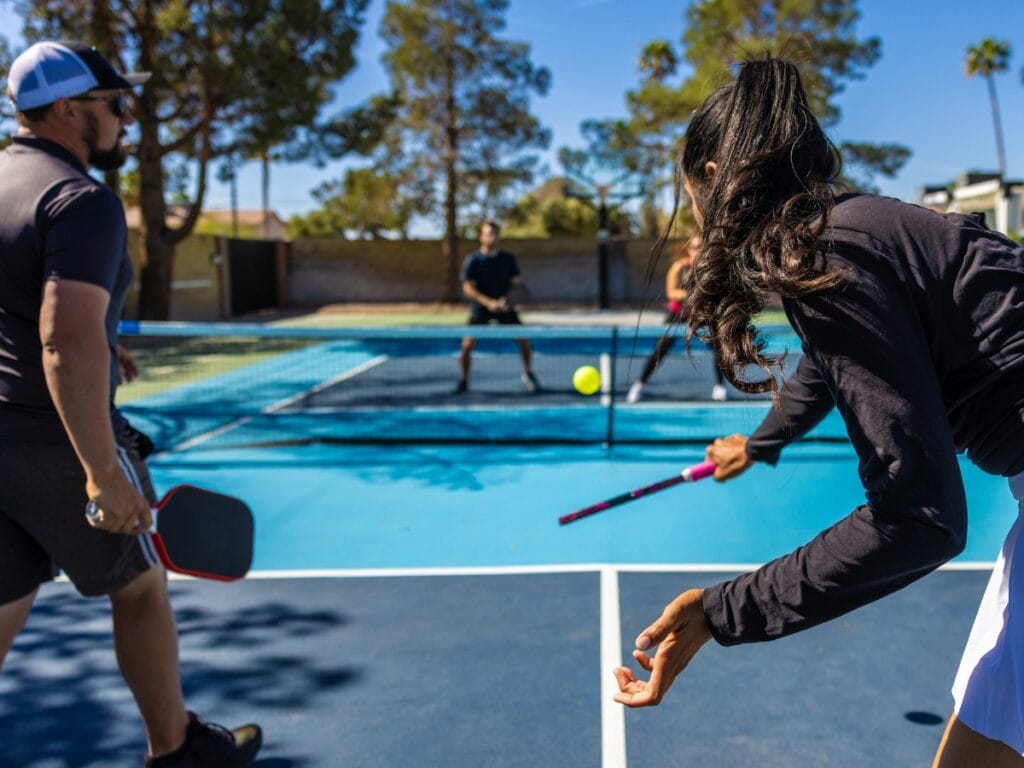
Getting started is simpler than most racket sports. Learn the rules, practice a repeatable underhand serve, and spend time at the non-volley zone working on soft shots. Short sessions a few times a week are enough to lock in timing and footwork. Keep score out loud, rotate partners, and aim for longer rallies rather than winners. The early goal is consistency. When newcomers see the ball stay in play, they understand why is pickleball so popular with first-time players.
Local Lessons And Coaching Options In Atlanta
If you prefer structure, Atlanta has plenty of ways to learn. Group clinics move at a comfortable pace and cover basics like scoring, court positioning, and shot selection. You get live reps and quick corrections while playing with people at a similar level. One-on-one coaching is useful when you want targeted work on a single skill such as the third shot or volley control. For kids, short camps blend fundamentals with simple games so they stay engaged while learning footwork and paddle control. Whatever you choose, look for sessions that mix instruction with real play so you can try new skills under light pressure.
How Skill Development Progresses From Beginner To Advanced
Progress follows a clear path. Beginners focus on legal serves, returns that land deep, and a reliable soft shot near the kitchen. Once those pieces feel steady, the next step is rally control and placement. You will learn to hit to safe targets, reset fast balls into the kitchen, and move with your partner as a single unit. At the intermediate stage, players add pace when needed, read opponents’ patterns, and make smarter choices at the transition zone. Advanced play layers in tactics such as third-shot drops that set up net control, stacking to keep preferred forehands in the middle, and selective speed-ups that test reactions without losing balance. Each step builds on the last, so improvement feels natural rather than forced.
Why Continuous Improvement Keeps Players Engaged
Pickleball rewards small gains. Landing a higher percentage of serves, adding two more dinks per rally, or choosing the right moment to speed up has an immediate payoff. Matches get closer and more fun as mistakes drop and control rises. The format also makes feedback easy. Partners can share a quick tip between points, and open play introduces you to different styles that challenge your habits. Leagues grouped by skill give balanced games and clear targets for the next level. Because progress is visible week to week, players stay motivated without needing long, draining workouts.
Practice Habits That Speed Learning
Keep sessions focused. Warm up with soft volleys, then spend ten minutes on serves to both corners. Play short games to 7 with one theme, such as keeping every third shot soft. Finish with a few minutes of note-taking on what worked and what needs attention next time. Simple routines like these improve faster than random hitting because they turn court time into purposeful reps.
Pickleball is approachable, structured, and social, which is why is pickleball so popular across ages and skill levels. Start with solid basics, add one new tactic at a time, and keep games friendly but intentional. With steady practice and smart coaching, beginners can turn curiosity into confident play that lasts.
Where Can You Find Pickleball Courts and Community Resources in Atlanta?
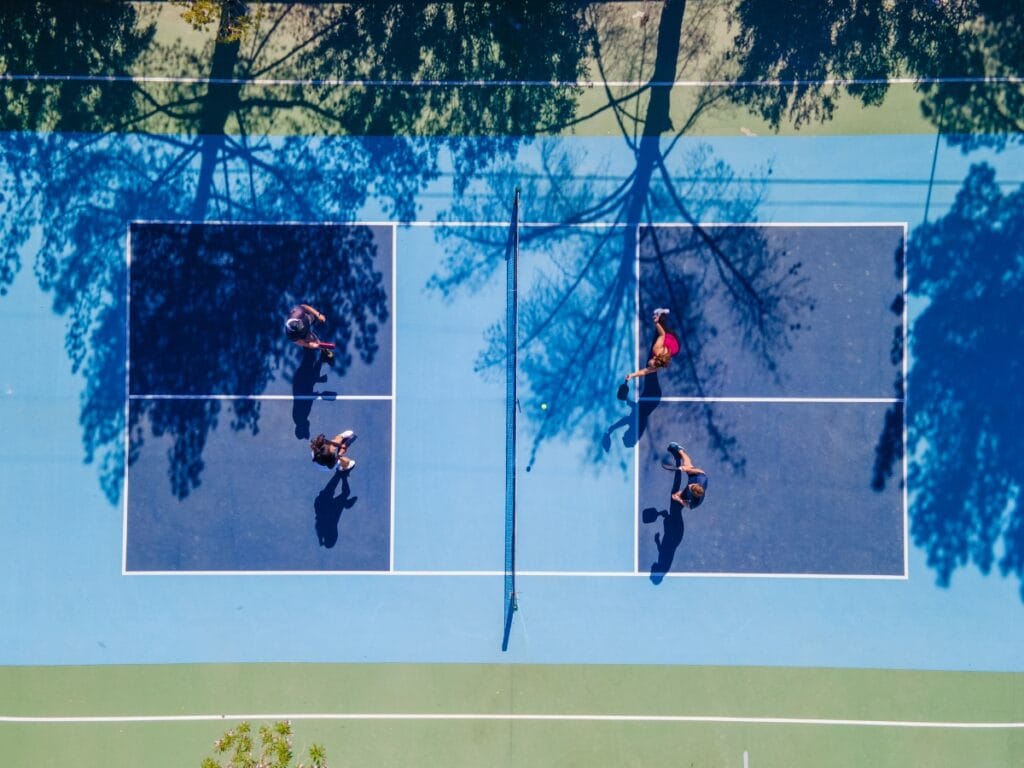
Atlanta’s pickleball scene spans municipal parks, multi-sport complexes, and specialized indoor venues like Planet Pickle in Suwanee, offering year-round access, equipment rentals, and social programming.
How Do Local Clubs and Social Leagues Support Pickleball Players?
Social leagues and membership clubs organize skill-tiered ladders, round-robins, and charitable fundraisers, creating structured play opportunities and fostering lasting connections.
- Weeknight leagues for intermediate and advanced players.
- Weekend mixers introducing newcomers to regular play.
- Charity tournaments donating proceeds to local causes.
Pickleball’s unique blend of fast-paced play, social camaraderie, inclusive design, and health benefits explains its explosive growth and widespread appeal. Whether you’re chasing your first rally, seeking new friends, or aiming for tournament glory, Planet Pickle’s welcoming courts and expert coaching in Suwanee stand ready to support every step of your pickleball journey.
Conclusion
Pickleball’s explosive popularity isn’t just a trend—it’s a testament to a sport that’s social, accessible, and downright fun for all ages. Whether you’re a curious beginner or a seasoned player, Planet Pickle offers premium courts, expert-led programs, and a vibrant community where everyone can experience the thrill firsthand. Ready to join the action? Call 678-404-5792 today to book court time, explore our leagues and clinics, and discover why pickleball is more than a game—it’s a lifestyle. Your next rally awaits!

